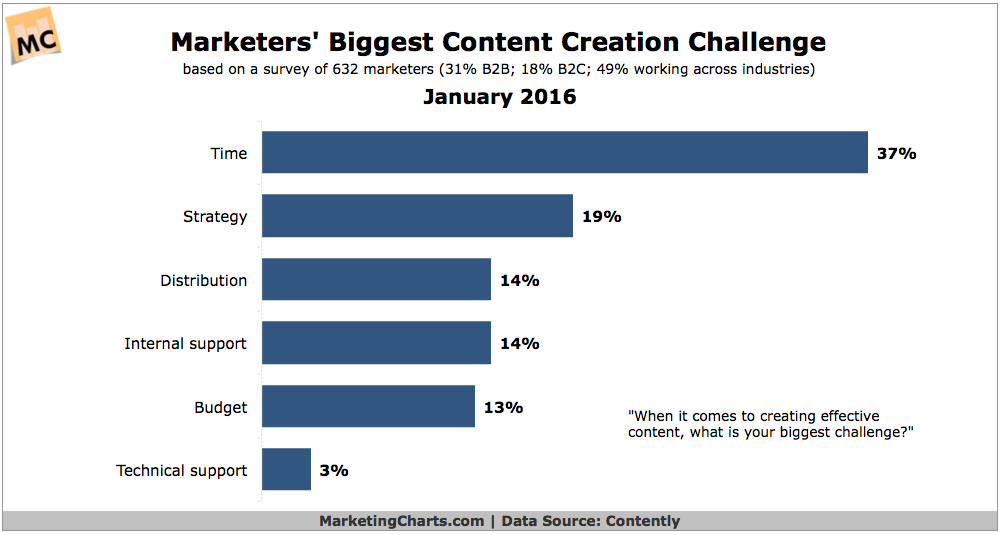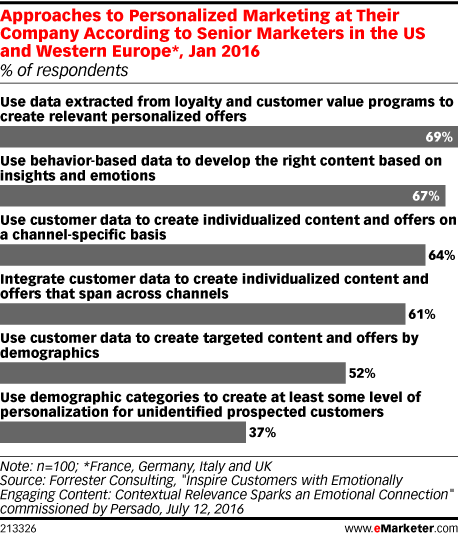Each week, we publish a mishmash of ecommerce-related, insight-infused articles for your to smash through. Just as we collect business information across all of a merchant’s channels in a single place, we’re doing the same for ecommerce-related content from a variety of top tier content creators.
By now, you and most other e-retailers understand the importance of publishing content, whether it’s in terms of its SEO benefits, engagement, or its effects on the purchase process. How about some thoughts from your peers? This week’s mishmash has some useful content on content marketing, from surveys revealing the strengths and struggles of marketers, how link building and content marketing align and differ, bringing personalization to content, and more.
How Content Are Marketers With Content
To get started, here’s a survey by Contently covering how marketers are dabbling in content marketing as a whole. It has a ton of useful information, from their biggest content struggles to their budgets and best distribution channels. As it turns out, more marketers than ever (73%) are publishing content, with most producing it in-house as opposed to free-lancing it. Email tops the list in terms of distributing content, with Facebook in second place. What’s the largest hurdle for their content strategies? Time, by far.
Writing On a Budget
Time might be the largest challenge to creating content, but let’s be honest, the real issue is money. If the budget was there, time wouldn’t matter as much; a business owner would just hire more content creators. And it’s no surprise why they don’t — there are plenty of other operations to spend money on, whether it’s on other marketing efforts, like social media or email, or on more bottom-line endeavors, like purchasing inventory and paying shipping costs.
So how does a merchant create content on a cost-effective basis? Shopify lays the groundwork for doing it on a shoestring budget. Outsourcing is always on option out there. Like you’d pay a 3PL to expertly store and fulfill products, outsourcing an agency that produces content means paying for top-notch work. But if you take DIY seriously, organization and efficient distribution help to save more time for writing.
Sole Control of Content
More than likely, an e-retailer isn’t going to be hiring someone in-house for content creation. For those true DIY-ers, Bigcommerce has 9 content tips if you’re a team of one. That efficiency mentioned earlier is absolute key here — recycle and reuse content, and develop a calendar to stay on track. Sometimes inspiration hits us in the face randomly when we aren’t even looking for it, so be sure to log your content ideas. Bring some brainstorming to the table, too — if you’re working with a team, but have nobody assigned specifically to content, encourage team members to offer up their ideas. Oh, and like all operations, you’ll want to work out a content strategy that informs all of your content decisions while tying into your overall marketing strategy.
Getting Personal
If it’s to be effective, many merchants believe that content must be personalized, and that means marrying it to customer data. A study by Forrester Consulting and Persado on 100 senior marketers illustrates where they’re getting such data from and how they’re combining it with content efforts. Loyalty programs were considered the best place to extract data, which makes sense considering the fact that they’re all about getting a customer to continually purchase. Audience reaction is also useful — look for feedback to content, whether it’s in the form of surveys, conversions, or social media engagement. In terms of difficulties, dispersing personalized content through multiple channels, whether it’s email or social media, remains a problem for marketers.
Two Peas in a Pod
An article focused on content would be nothing without some SEO. The two are forever linked, mostly because of, well, links. But, while they’re connected, your link building and content marketing strategies aren’t entirely the same; each serves a different purpose. In this article by Practical Ecommerce, the difference is explained: content is about fostering an audience that leads to purchases, and link building acts as a door to that content, bringing more viewers in to grow that audience.





